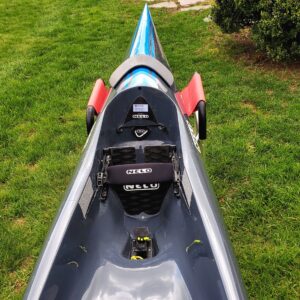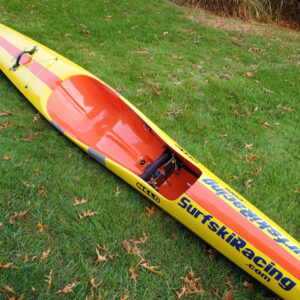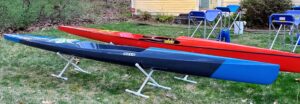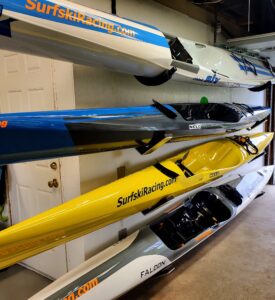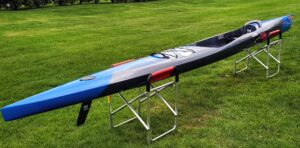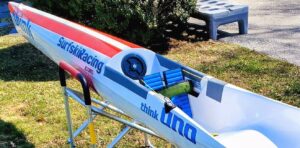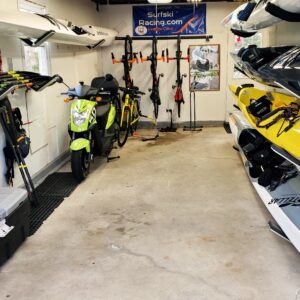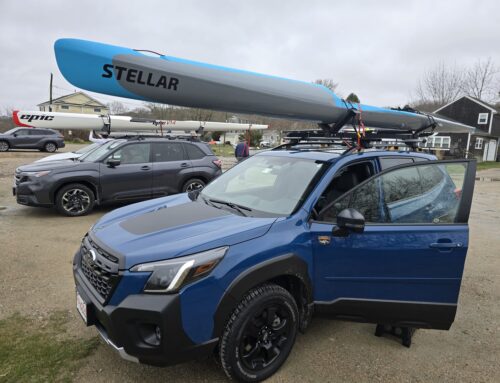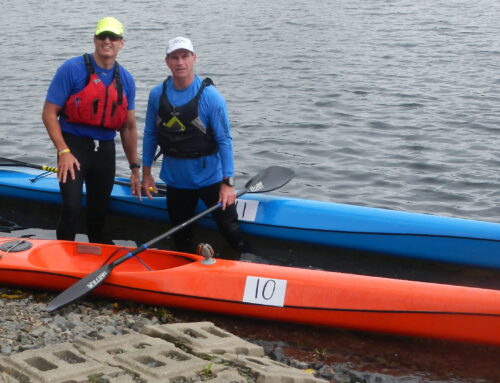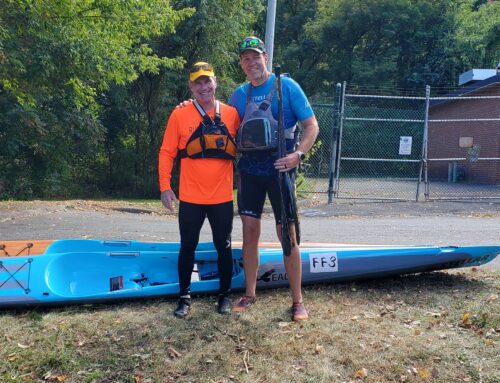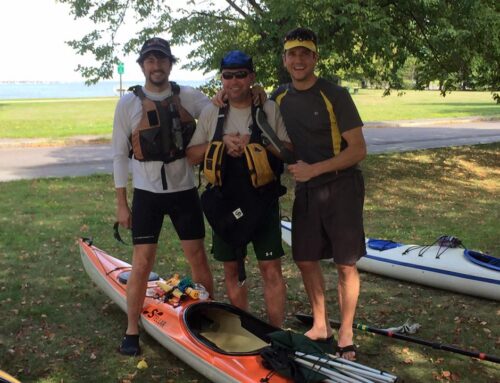Since paddling surf skis since 2003, I estimated I have owned at least 100 surf skis(Huki, Fenn, Think, Epic, Stellar, Vajda, Nelo) excluding “stock” skis for sale during my Stellar or Think days. So I have spent a lot of time getting them ready to paddle for the first time. Here is a checklist of my quality control and outfitting of these skis.
- When purchasing a ski, you should also invest in a rack to transport them safely like the V-Bar from Goodboy PaddleSports . I have had a few customers show up to take their ski home without giving much forethought to how to transport their new ski.
- Invest in a pair of boat stands to work on your ski or even store it temporarily.
- Ask where you are going to store it. Outside, Inside? will it fit in your garage or basement? Do you have racks to store it, a cover? Can you move the ski by yourself?

- Once you take delivery, unwrap your new ski, check it over for any damage, and take a picture of it. I have had only one personal ski damaged from the carrier over-tightening the straps. I don’t worry about the tiniest imperfections if only cosmetic.
- Install the rudder. Sometimes the rudders do not fit correctly, scrape the hull, the gap is too large between the hull and the rudder. Make sure all screws, pins, and rudder yokes work as they should. Inspect the knots that attach the rudder yoke to the lines. You want to be confident they are secure!!
- Adjust the toe angle of the pedals for the first time. You will need to adjust several times as the rudder lines stretch out for the first few paddles. Check the rudder line knots or attachment points to the toe pedals.
- Adjust the footplate initially and you may want to mark the setting with tape or a marker particularly if other paddlers use your ski. Make sure it works properly.
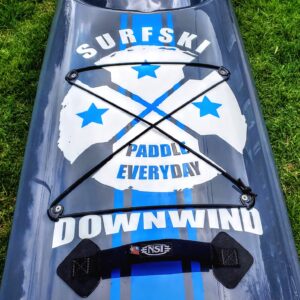
- Slowly, slowly, do not force, open and close the bailer. Close the bailer, then pour a quart of water in the footwell and see if the bailer leaks and works properly. Most bailers leak a tiny bit and may leak more once pressure is applied by your weight in the water. Hopefully, it will be almost watertight and you will not have to worry about it. It may help to apply a Teflon lubricant to keep it from sticking. Always rinse out your footwell, footplate tracks, and bailers to keep them free of sand and salt water after each paddle. You want them always to be in good working order. I know of some paddlers who rarely rinse their skis and wonder why the footplate will not move a year from the time they bought it.
- Take a screwdriver and Allen wrench and make sure all the screws on the footplate, handles, etc are appropriately tight. DO NOT over torque them, just make sure they are snug including the LEASH ATTACHMENT. YOUR LIFE DEPENDS ON THIS!
- Attach the wave deflector if your ski needs it.
- Once I have done the above, I suggest you rinse off your ski, dry it and then apply a coat of wax to the entire ski. Most paddlers will not do this before their first paddle and I have skipped this step a few times. I then applied the wax later. I love waxing almost anything, car, ski, bikes, etc. By waxing you really get to know your ski and you protect it from superficial scratches and the elements. This also prepares it from day one for resell. All my skis have been waxed many times and it shows!
- I then place self-adhesive attachments to secure my hydro pack in the footwell to prevent it from moving during a potential capsize. Nothing is more time-consuming than trying to catch your floating water pack and putting it back in the footwell after a capsize. I place one below the bungies, one on the backside of the footplate, and one on the left gunwale to run my extended tube from the footwell and clips to my PFD.
- I take a piece of line and thread it through the leash attachment point on the ski. It must be bomb-proof. I attach my paddle leash to this.
- In rough conditions, I now use a paddle leash and a waist leash so I can’t lose my paddle or my ski. Since there is no place to attach the waist leash behind the cockpit, I place a 3m self-adhesive surfboard handle near the deck bungies.
- Now I place a few strips of rubberized, self-adhesive non-skid step tape where I grip the ski when handling it. If I don’t have clear protective tape, I may use the above to protect the surf ski from paddle strikes.
- I apply clear protective tape on the gunwales that protect the surf ski from minor nicks and scratches when handling, remounting, and transporting.
- I attach a weed guard with CLEAR silicone adhesive ensuring there is enough room regardless of what size rudder I use. (I have not attached a weed guard yet on the 540, deciding on the best rudder shape to use).
- Depending on the ski, I may use duct tape and soft foam to pad out my hips and calf area for better control and fit.
- Lastly, I add the SurfskiRacing.com decals!

